The East Bay Bonsai Society recently held their 49th annual show at the Lakeside Garden Center in Oakland, California. It was another good show for EBBS with a fun mix of varieties, accents and suiseki. Below are photos from the show with a few comments about balance. For comparison’s sake, here is a link to photos from last year’s show.
Why the focus on balance? When exhibiting bonsai with other elements – second trees, accents, or scrolls – the tree will either guide the viewer’s gaze toward the accent or away from it. Trees with clear flow to one side or the other look good on their own and help create compelling displays. What if a tree doesn’t flow one way or the other? Maybe it’s perfectly balanced. Or maybe it’s awaiting further development that will guide it in a single direction – that’s part of the fun.
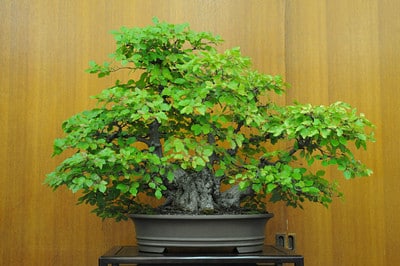
Korean hornbeam – does the tree point left or right?
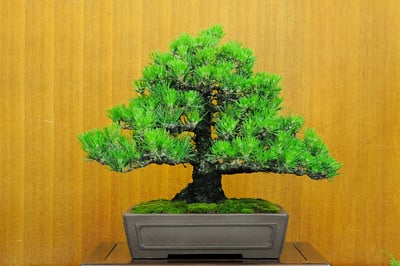
Japanese black pine – a well-balanced bonsai; does it belong on the left or right side of the display?
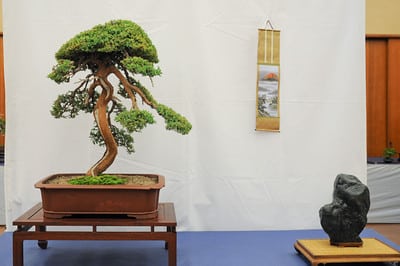
Procumbens juniper – good, strong direction to the right
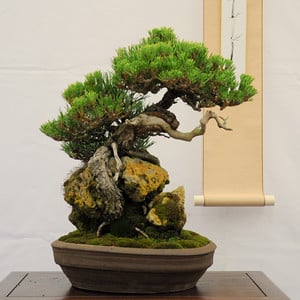
Japanese black pine on a rock
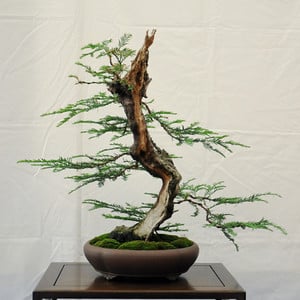
Coast redwood – this tree is early in its development – which way should it point?
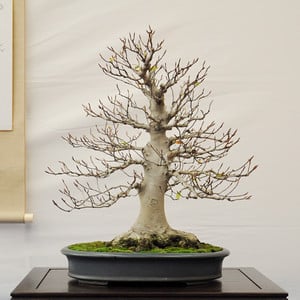
Japanese beech – informal upright, points to the left
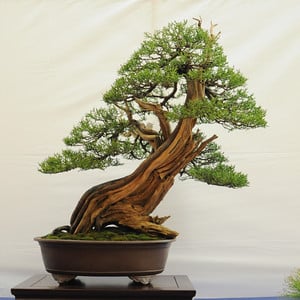
California juniper – trunk leans to the right, apex offset to the left for balance
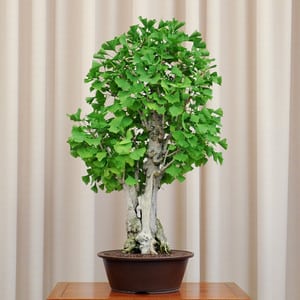
Ginkgo
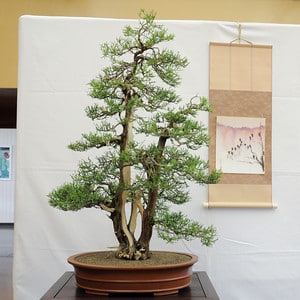
Juniper – both main trunks point to the right
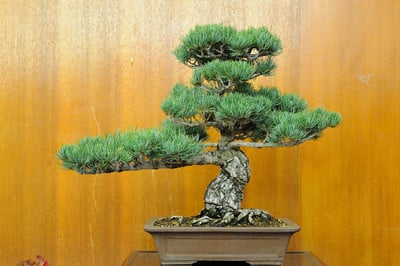
Japanese white pine – the key branch points left – does the apex?
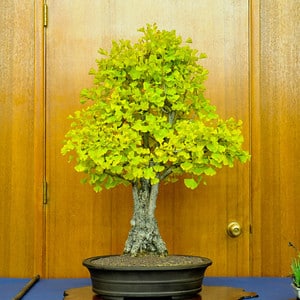
Ginkgo
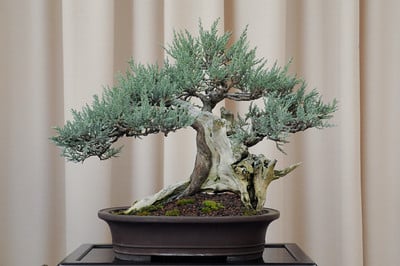
Sierra juniper – long branch to the left, good deadwood to the right
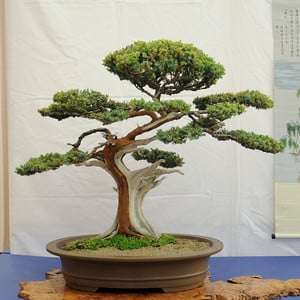
Procumbens juniper
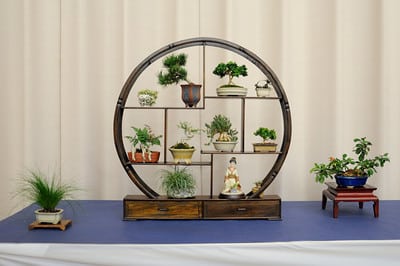
Shohin display
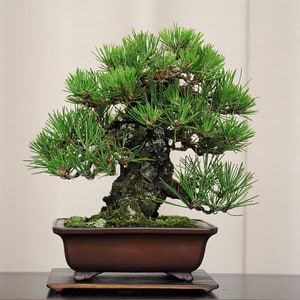
Shohin Japanese black pine – subtle slant to the right
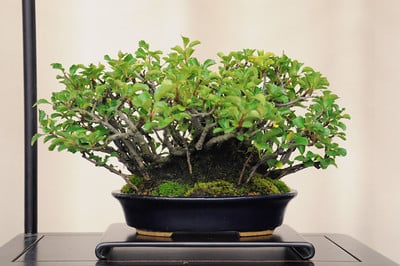
Shohin Japanese quince
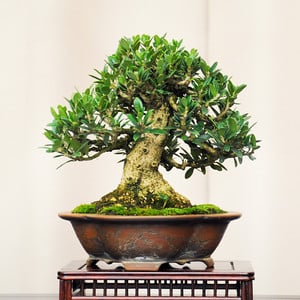
Shohin Olive – informal upright: the lower part of the trunk leans right, the apex points left for balance
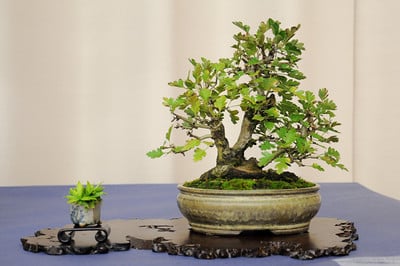
Shohin Japanese hawthorn
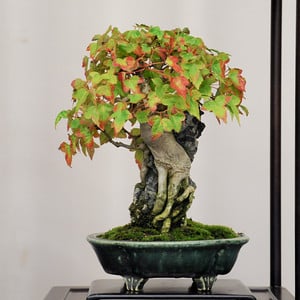
Shohin trident maple on rock – trunk and apex point left
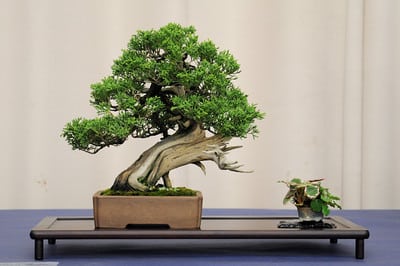
Shohin juniper – which way does this juniper point?
Subscribe to Bonsai Tonight
New Posts Delivered Every Tuesday and Friday
Mike Pollock says
Many of these trees aren’t really refined enough to fairly comment on their flow. But here are my comments on a few of them.
The last tree, the shohin juniper feels like it is moving to the left. This could be emphasized by better defining the negative spaces on the left and tightening up the apex on the right so there is no space high up on the right side of the crown. BTW, if the owner doesn’t want to do that work, I’ll gladly take the tree. 😉
The procumbens shows this crown concept well. Although I’d thin it out, the length and spaces all lead the viewer’s gaze to the right. I covered the upper crown and all of a sudden the whole tree points right and looks better.
The JBP on the rock also has a crown that contradicts the bottom of the tree. That could be easily fixed with wire right now.
Thanks for posting these. This is a great blog and I enjoy the work you put in on the great photography to go with the posts.
The first tree, the hornbeam has a crown that points left and a lower section that points right.
Mike Pollock says
Oops. The line about covering up the upper crown was meant for the comments on the hornbeam at the end of the comment.
Michael M says
Jonas, Interesting thoughts to consider, thanks.
First the Hornbeam, It looks like the main trunk goes off to the the left and comes back to center. The secondary trunk acts like a primary branch and definately pulls the eye to the right. The apex leans left again, and leaves me confused. If the upper left apex is shortened, remove about 1/4 of the height, and directed to the right you would have the lower tree and the apex moving right. Resulting in a more compact and powerful tree with all of the flow moving right.
Second, the California juniper. A great tree with a lot of work and complexity. The trunk moves right, but the apex points left for balance. Wouldn’t the tree be more dramatic if the top pointed right to match the flow of the trunk? The lower right branch would have to be heavier to add balance to the right and the left thined back a bit. Then the visual balance of the tree would be out of the pot! A more shallow oval pot that has half again the width of the current one and the trunk planted off center might make a balanced and dramatic setting. This is not to say the tree is not great the way it is. Reworking would be a lot of work and 3+ years, but as you say, part of the fun of this. There are always options.
Thanks again for helping to streach my thoughts on this art.
Michael